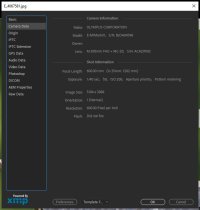Yes. You are not shooting at 1/400 on an 800mm lens. Even with a tripod you would get soft images 90% of the time. In rrality 1/800sec is the minumum. So you would then be looking at ISO 10000
That's not the case at all. I did shot plenty of sharp images at 600 and 800mm equivalent focal lengths and shutter speeds of 1/100 or 1/200 but often less than that. With fairly static subject and IS is perfectly possible.
Upvote
0


